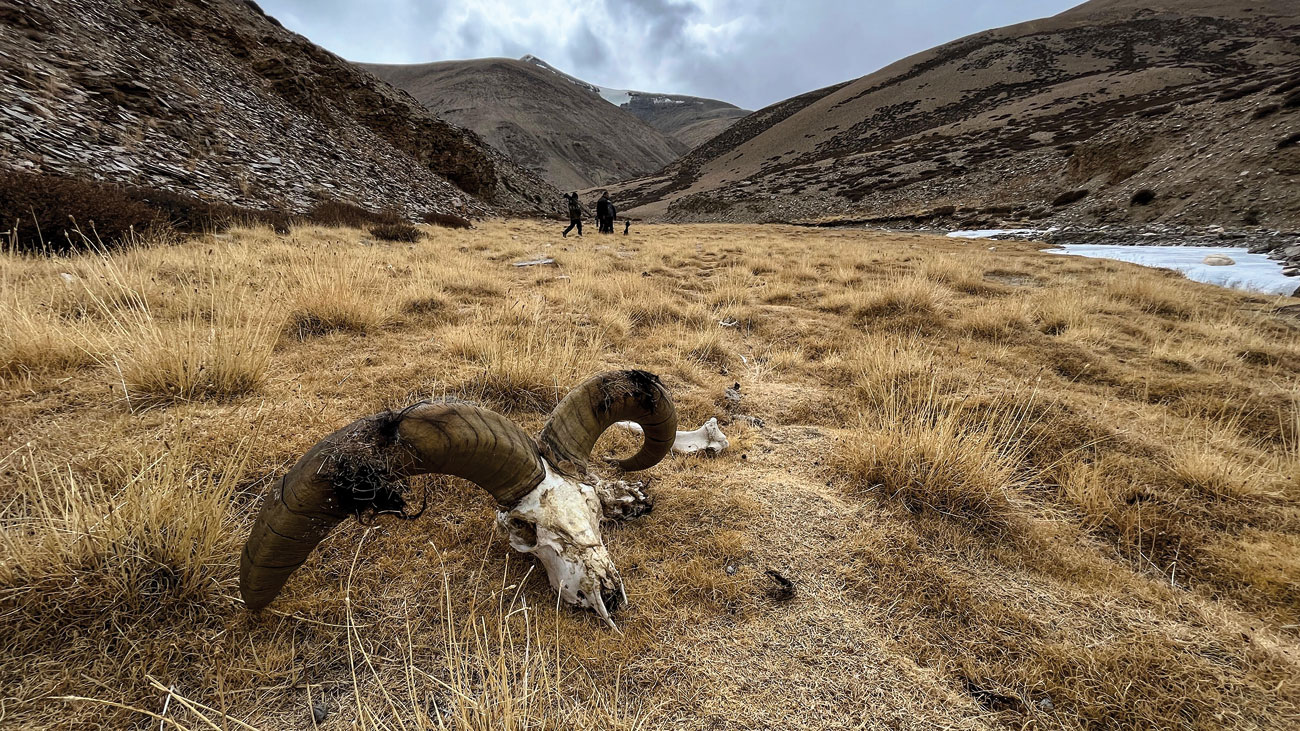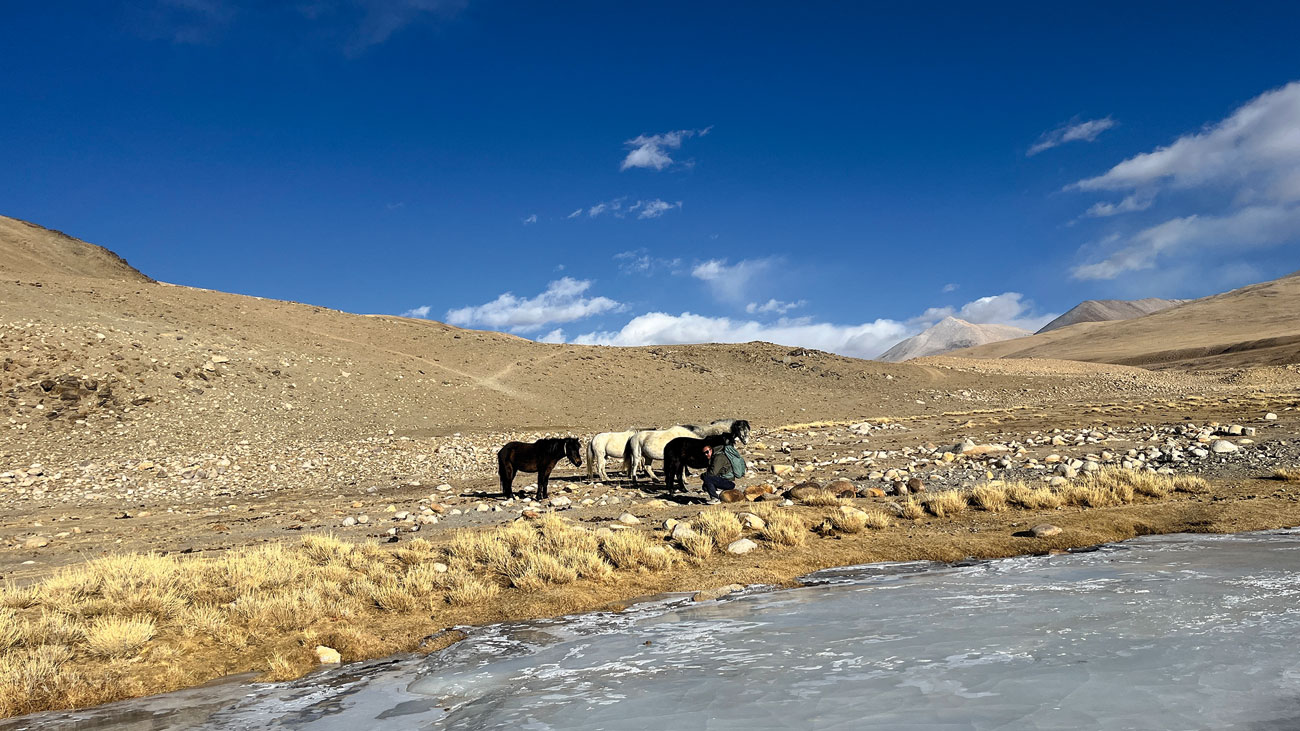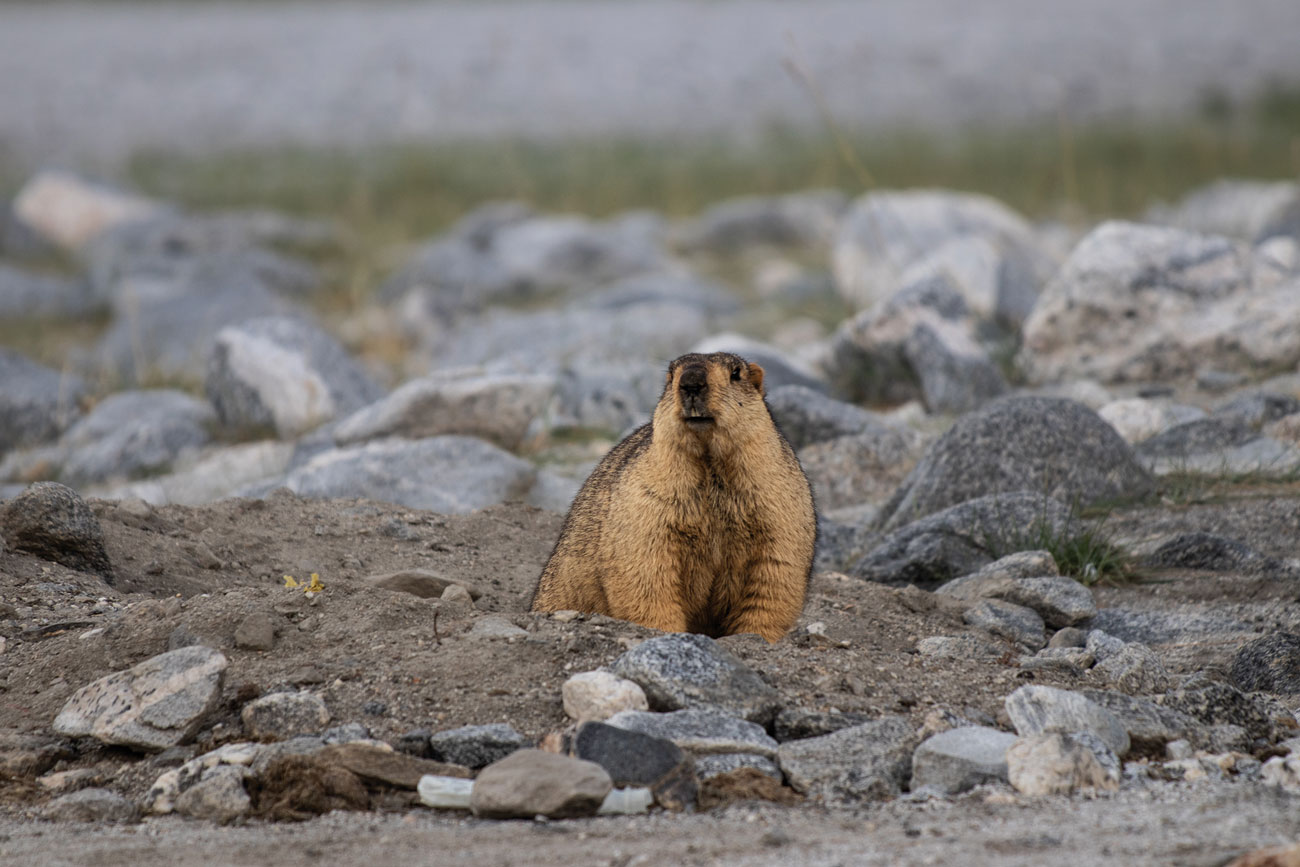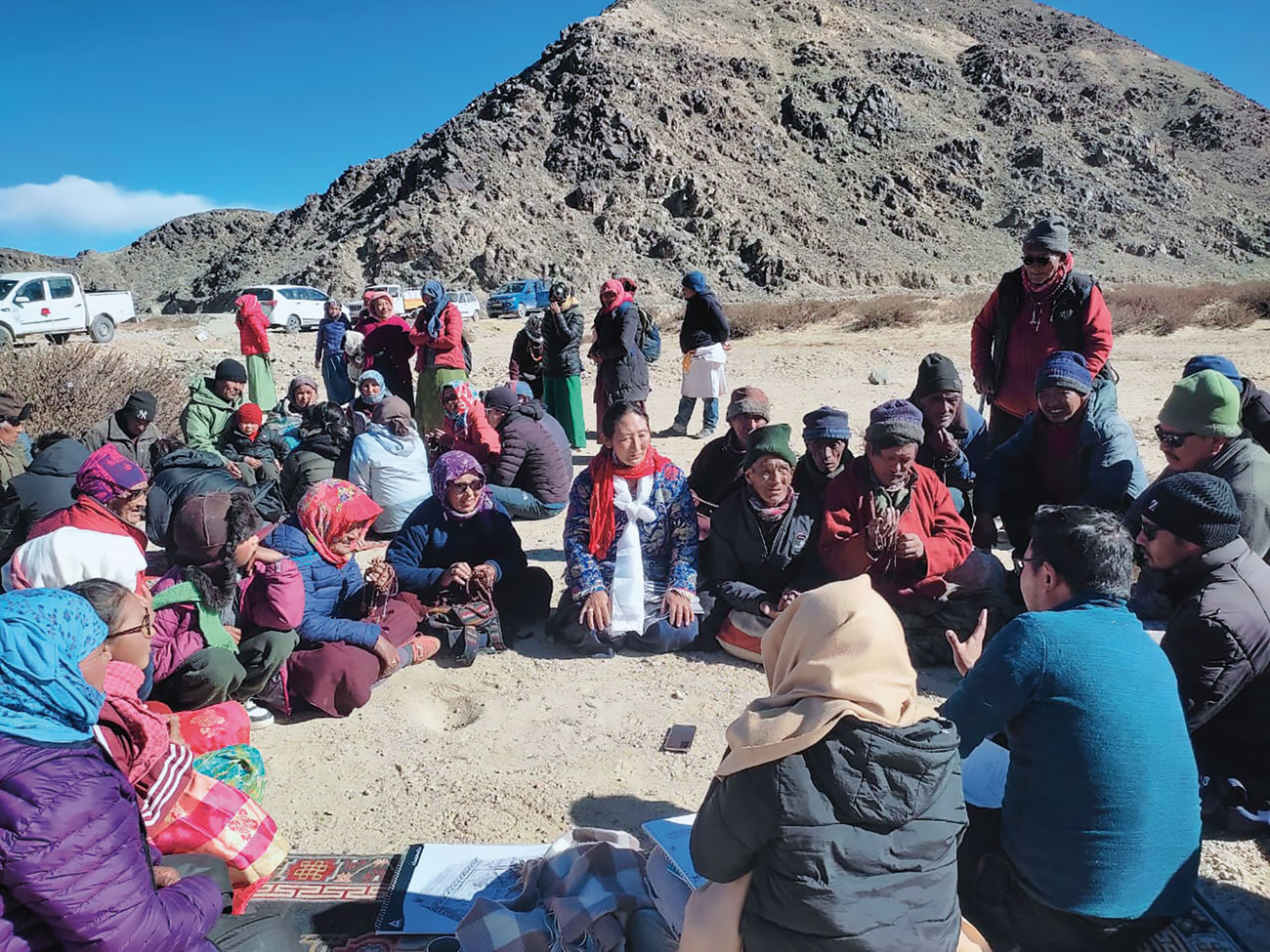Changthang's Fragile Balance: Navigating Tradition, Conservation And Economics
First published in Sanctuary Asia,
Vol. 44
No. 4,
April 2024
By Rishi Kumar Sharma
Shangri-La In The East
As I stood in serene silence, immersed in the breathtaking beauty of the landscape, where Black-necked Cranes and Tibetan wild asses enhanced the allure, my colleague Preet Sharma, a seasoned biologist, abruptly interrupted my reverie: "Wolves!" he exclaimed. Peering through my binoculars, I watched with fascination as they moved with a quiet confidence, their keen eyes fixed on the kiang, their hunting prowess concealed beneath a calm and deliberate demeanour.
The windswept highlands of Changthang offer panoramic vistas of pristine mountain beauty, with turquoise lakes shimmering beneath deep blue skies. This sprawling landscape spans the western edge of the towering Tibetan plateau, reaching into the southeastern expanse of Ladakh, India. Vast highlands, rolling hills and expansive lakes converge to nurture the birthplace of the Upper Indus river. As spring arrives, the sight of shepherds tending to their flocks of sheep and goats paints a picture of profound contentment and harmony.

Photo: Preet Sharma.
The idyllic images of Changthang splashed across the internet paint a picture-perfect vision of paradise. However, beneath this beauty lies a troubling truth, evident to those who look closely. The highlands are marred by tonnes of organic and plastic waste strewn across the terrain. Free-roaming dogs run rampant, preying on wildlife as well as livestock. The spectre of boundary conflicts casts a shadow over access to pastures, and amidst these challenges, competing interests and the unforgiving forces of nature, nomads struggle to carve out a livelihood. One of the most striking aspects of the Changpa nomads' existence is their limited control over shaping their destiny and determining the evolution of their bond with the land, resulting in a profound dilution of stewardship.
While the Tibetan wild ass, known as the kiang, remains a common sight across the region, relentless pressures from unchecked tourism, constant construction noise from heavy machinery, and the incessant traffic of vehicles have pushed many of these ungulates to the brink. Sightings of argali and blue sheep near roads are now a rarity, and the Tibetan antelope is relegated to the fringes, primarily found near the Kalaktartar plateau. With limited studies on carnivores such as snow leopards and wolves in this area, it is challenging to gauge the extent of their vulnerability to these pressures. Meanwhile, the Changpas endure livestock losses to wild carnivores, and increasingly to free-roaming dogs. While the night skies remain stunningly beautiful, the tranquillity is often disrupted not by the haunting howls of wolves, but by the aggressive growls of packs of dogs.
In the past, these regions thrived on sustainable livestock farming, with strong traditions of managing natural resources and a deep respect for wildlife. Local communities played a crucial role in caring for the land, leading to well-maintained rangelands that provided essential services and resources, while also boosting resilience to climate change and ensuring livelihood security. However, in recent years, the decline of traditional community structures owing to factors such as insecurity over land ownership and unsustainable policies, coupled with a growing demand for products such as pashmina/cashmere wool, has led to significant negative consequences. These mounting pressures on the rangelands are causing them to degrade, resulting in issues such as food scarcity worsened by climate change, impacting both people and wildlife. As attitudes towards wildlife stewardship have shifted and livestock has become more valuable, tolerance for wild animals has declined sharply. Additionally, the lack of infrastructure for wool processing and limited market connections mean that locals are earning much less from pashmina than they could, exacerbating poverty. The absence of alternative income sources further compounds these challenges.
The Golden Fabric And Perverse Incentives
The high-altitude rangelands have been stewarded by pastoral communities such as the Changpas for millennia, fostering a harmonious coexistence with wildlife and implementing sustainable land use practices. However, this time-honoured system is now facing significant challenges, leading to a tragic decline. A Changpa nomad shared, “I have noticed that many of us pastoralists have strayed from our traditions, and it is affecting the rangelands' ability to recover. Our ancestors taught us the importance of sticking to traditional routes, not just for our own sake, but for the health of the rangelands themselves. When we stray from these paths, we disrupt the natural cycle of regeneration. It's not just about preserving our way of life, it's about protecting the spiritual and natural essence of our land."
I argue that the drivers threatening local cultures and economies also imperil the preservation of Changthang and its rich biodiversity. Changthang garners attention from various actors and stakeholders, all with positive intentions but frequently differing visions for the region. Pastoral communities are particularly apprehensive about government policies favouring Protected Areas, fearing that these measures could undermine their traditional rights and stewardship roles. Excluded from decision-making processes and unable to diversify their livelihoods, these communities find themselves marginalised and impoverished.
As the global demand for pashmina grows, so do the pressures on Changthang's rangelands. But are the nomadic communities truly benefiting? Climate disruptions, development pressures, and geopolitical conflicts add to the strain, raising questions about the future of centuries-old land management practices and the self-reliant local economy. What are the costs, seen and unseen, to the land and its inhabitants as this system falters? How can we preserve Changthang's beauty and bounty while safeguarding its delicate ecological balance? Economic incentives alone may not be enough to ensure stewardship of the land. This frontier bears the heavy burden of youth departing in pursuit of brighter horizons, leaving behind elders to weather the solitude of their twilight years. Villages stand deserted, echoes of traditions fading into obscurity, as the timeless nomadic way of life faces persistent challenges from various forces.

The Changpa have been stewards of Ladakh’s high-altitude rangelands for millennia, fostering a harmonious coexistence with wildlife and implementing sustainable land-use practices. This time-honoured system is now facing significant challenges. Photo: Preet Sharma.
India's trans-Himalayan rangelands span 1,86,000 sq. km., with only 8.2 per cent designated as strictly Protected Areas (PAs). However, the National Planning Commission of India had identified shortcomings in the PA-centric approach to conservation. Top-down conservation efforts often exclude pastoralists, and wildlife extends beyond PA boundaries. Additionally, conflicting goals among influential stakeholders hinder effective conservation efforts.
A report from the National Planning Commission's task force on 'Grasslands and Deserts' highlights the issue: "Grasslands are neglected as an independent ecosystem. The Forest Department prioritises trees, the Agriculture Department focuses on crops, and the Veterinary Department oversees livestock but overlooks the grass on which they depend. These grasslands are considered 'common' lands of the community, yet traditional institutions that once ensured their sustainable management have either been absorbed by the government or have faltered, leaving no entity accountable for their well-being." Our firsthand experiences with the community reveal a sense of disillusionment that hinders the bond between the Changpas and their land. This disillusionment stems from uncertainties regarding land tenure and access to resources.
Arresting The Decline
The vibrant splendour of Changthang emerges from the harmonious interweaving of culture, values, livelihoods and nature, catering to the needs of its human inhabitants while offering refuge to diverse flora and fauna, resilient even in times of upheaval. Yet, the rangelands teeter on the brink, strained beyond capacity, and ecologists caution that natural systems possess tipping points, beyond which recovery may prove elusive.
While technological innovations offer aid, true preservation lies in a revival of reverence for the land, reinstating traditions that once celebrated every facet of pastoral production and honoured nature's boundaries. To the connoisseur, pashmina may dazzle with its finesse, but to the pastoral nomad, it embodies the goat, frigid air, soil, and grass – each integral to its creation.
Introspection is imperative. Traditional practices such as ‘lhangde’, where each household contributes to communal agricultural work, are dwindling, as are cooperative herding ventures. Governance and management of commons have suffered erosion, endangering the age-old rotational grazing system, founded on the intimate knowledge of Changpa nomads, which once safeguarded against rangeland degradation.
The diversified pastoral production system, encompassing goats, sheep, yak and horses, upheld sustainable livestock product harvesting and a robust barter system, fostering symbiosis between agriculturists and nomads.
Changthang calls for a conservation-minded economy, one that cultivates economic prosperity from the region's natural resources, while simultaneously preserving and restoring rather than depleting its rich natural and social assets.

Among the longest hibernating mammals, Himalayan marmots Marmota himalayana are rodents that inhabit alpine grasslands. Photo: Rishi Sharma.
Envisioning A Future For Rangelands And Its People
Preserving what remains and reclaiming what has been lost is a formidable challenge, yet one intrinsically linked to the preservation of rangelands. It hinges upon embracing the knowledge and cultural heritage of living in harmony with the land – understanding its seasons, cycles, and rhythms, knowing how to utilise it sustainably, and respecting traditions that acknowledge the interconnectedness of all life forms, from the majestic wolf to the humble pouched marmot with cheeks brimming with foraged grass and seeds.
WWF’s ongoing efforts address the degradation of high-altitude rangelands and its repercussions on biodiversity and livelihoods. Through our programmes in the region, we are assisting communities in crafting a conservation strategy for rangelands, which involves adopting a respectful listening approach that honours traditional values and rejuvenates community stewardship.

As the global demand for pashmina grows, so do the pressures on Changthang's rangelands. Nomadic communities are not necessarily benefitting from this. Photo: Jigmet Angmo.
Key steps include documenting Indigenous knowledge, mapping local institutions, and understanding resource management practices. This inclusive process aims to establish a shared vision for vibrant rangelands, ensuring that all voices, including those of women and marginalised groups, are heard. By prioritising the conservation of cultural, social and ecological values, this collaborative endeavour aims to align development and conservation goals. Our focus is on fostering improved human-wildlife coexistence and bolstering incomes by promoting products that are gentle on the rangelands.
We empower local communities to take the lead in co-managing these invaluable landscapes in the Indian trans-Himalaya. Ultimately, our goal is to restore the Changpas' role as stewards of the rangelands, benefiting both people and nature.
Rishi Kumar Sharma Rishi is the Lead for Science and Policy – Rangelands, Snow Leopards, Himalaya, at WWF-India. A conservation scientist, he harmonises ecological principles with traditional community wisdom to address the most formidable challenges encountered in the Indian Himalayan region.





